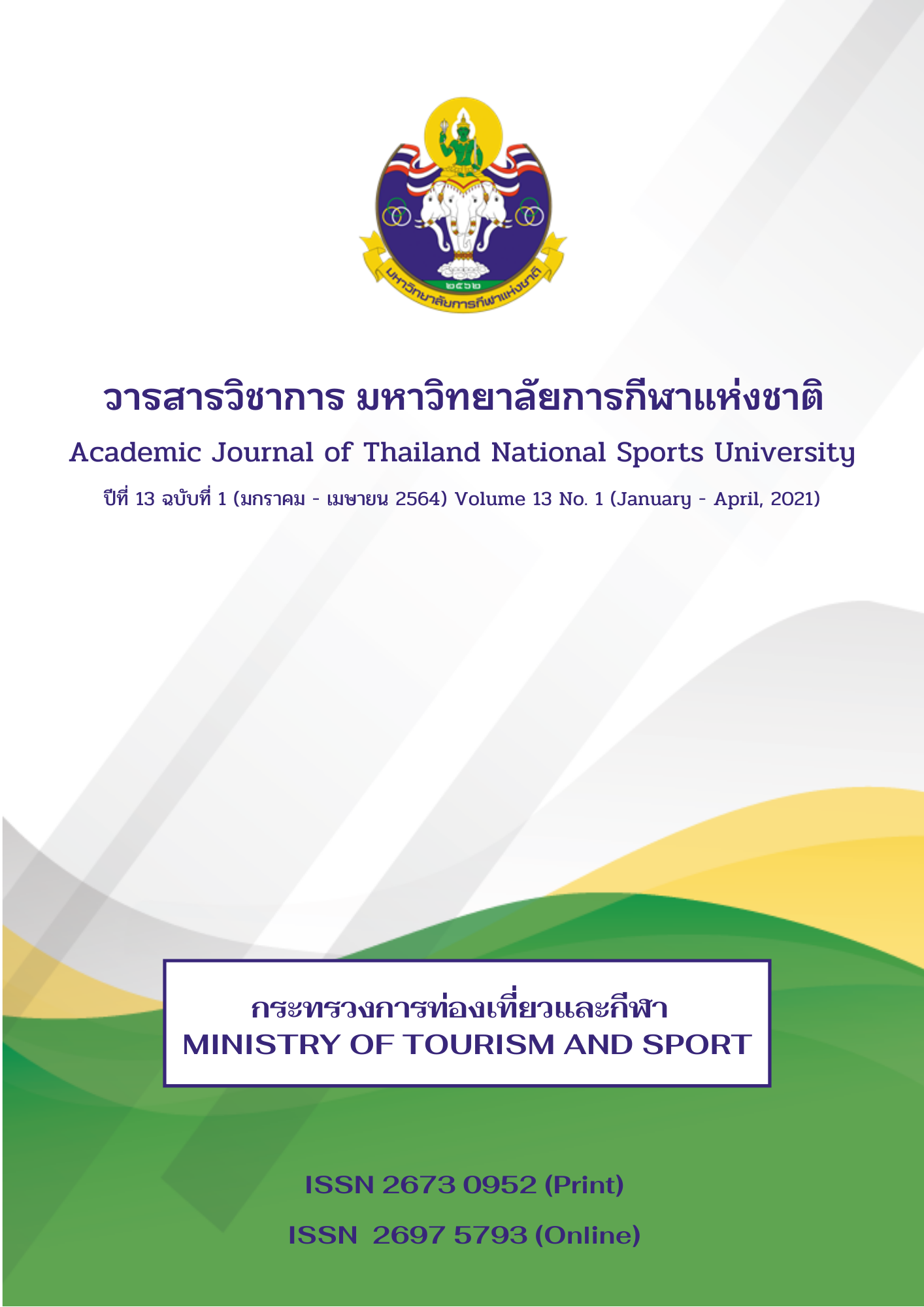DEVELOPMENT OF PHYSICAL LITERACY MEASUREMENT INSTRUMENTS BASED ON WHITEHEAD CONCEPT FOR UPPER PRIMARY SCHOOL STUDENTS
Main Article Content
Abstract
Physical literacy based on the Whitehead concept, has four key components: knowledge and understanding, motivation, confidence and movement competence. It can be adapted for upper primary school students according to their ability and development according to age with 15 indicators which are knowledge about physical health, physical fitness, physical activity, self-defense during physical activities, liking in physical activities, fun in physical activities, own ability and when compared to others, running forward, jumping, receive tennis ball, throwing tennis ball, skipping, hopping, dribbling football and kicking football. The purpose of this study was to develop physical literacy measurement instruments based on Whitehead concept for upper primary school students. The research process was divided into 2 phases. Phase 1: synthesizing the physical literacy indicator based on Whitehead concept for upper primary school students from documents and research in Thailand and other countries, 20 sources that use Whitehead concepts, and Phase 2: developing and inspecting the quality of physical literacy measurement instruments based on Whitehead concept for upper primary school students by using the data from Phase 1 as a basis to create instruments to cover according to the synthetic indicators and use the instruments for first trial with upper primary school students 12 people in each level, divided into 2 males and 2 females. They were requested to answer the questions and give opinions on issues that they did not understand and other issues. Then the data from the first trail were analyzed for improvement. The instrument was used for the 2nd experiment with the upper primary school students. Non-sample groups of 60 people, 20 people in each level, divided into 10 males and 10 females. They were requested to answer the questions and give opinions on issues that they did not understand and other issues. Then; the data were brought to improve again to examine the instrument quality. The situation multiple-choice test had a validity of 0.76 and reliability of .947; the situation multiple-choice measure had a validity of 0.8 and reliability of .707 and rubric score had a validity of 1.00 and reliability of .781.
Article Details
The published article is a copyright of the Academic Journal of Thailand National Sports University. The passage appeared in each article in this academic journal is a perspective of each author which is not related to the journal. Each author is required to be responsible for all components of his/her own article. If there are any mistakes, each author must be responsible for those mistakes on his/her own.
References
Balyi, I., Cardinal, C., Higgs, C., Norris, S., & Way, R. (2005). Canadian sport for life: Long term athlete development. Vancouver, BC: Canadian Sport Centers.
Kasem Nakornkhet. (n.d.). Bloom’s taxonomy and learning experience through active play. Retrieved from: http://www.parc-thaihealth.com/
Pichit Muangnapoe. (2015). Physical literacy. Journal of Faculty of Physical Education, 18(1), 1-6.
Shotiga Pasiphul. (2016). Learning measurement and evaluation (1st ed.). Bangkok: Printing of Chulalongkorn University.
Suriyan Suwannakarn. (2017). A guide for physical activity development for developing physical literacy for prathomsuksa 3 students (Doctoral dissertation), Kasetsart University.
Thai Health. (2017). Empowering vulnerable populations creating an inclusive society. Nakhon Pathom: Institute for Population and Social Research, Mahidol University.


